-
 Bitcoin
Bitcoin $84,926.0065
0.32% -
 Ethereum
Ethereum $1,597.5517
1.12% -
 Tether USDt
Tether USDt $0.9999
0.00% -
 XRP
XRP $2.0794
0.68% -
 BNB
BNB $592.3432
0.68% -
 Solana
Solana $138.4445
2.95% -
 USDC
USDC $0.9999
0.00% -
 Dogecoin
Dogecoin $0.1587
2.50% -
 TRON
TRON $0.2416
-1.44% -
 Cardano
Cardano $0.6294
2.38% -
 UNUS SED LEO
UNUS SED LEO $9.3856
2.20% -
 Chainlink
Chainlink $12.8148
1.36% -
 Avalanche
Avalanche $19.2969
1.27% -
 Stellar
Stellar $0.2447
1.26% -
 Toncoin
Toncoin $2.9953
0.57% -
 Shiba Inu
Shiba Inu $0.0...01220
2.78% -
 Hedera
Hedera $0.1665
0.41% -
 Sui
Sui $2.1428
1.41% -
 Bitcoin Cash
Bitcoin Cash $336.7121
1.74% -
 Hyperliquid
Hyperliquid $18.0777
5.43% -
 Polkadot
Polkadot $3.7198
1.38% -
 Litecoin
Litecoin $76.1424
1.29% -
 Dai
Dai $1.0000
0.01% -
 Bitget Token
Bitget Token $4.4493
1.78% -
 Ethena USDe
Ethena USDe $0.9991
0.00% -
 Pi
Pi $0.6399
5.38% -
 Monero
Monero $213.1009
-1.55% -
 Uniswap
Uniswap $5.2420
1.10% -
 OKB
OKB $51.0102
1.50% -
 Pepe
Pepe $0.0...07262
2.29%
How is the smart contract for NFT airdrops designed?
Designing an NFT airdrop smart contract involves key components like minting, distribution logic, and security measures to ensure a smooth and secure execution.
Apr 18, 2025 at 03:10 am
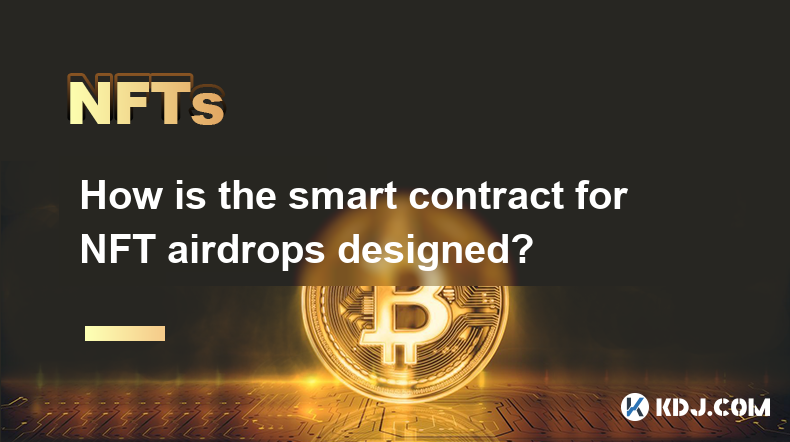
The design of a smart contract for NFT airdrops is a complex process that requires careful consideration of various factors to ensure the airdrop is executed smoothly and securely. This article will delve into the intricacies of how such a smart contract is designed, focusing on key components, security measures, and the implementation process.
Key Components of an NFT Airdrop Smart Contract
The foundation of an NFT airdrop smart contract lies in its key components, which are essential for the successful execution of the airdrop.
NFT Minting Functionality: This component is responsible for creating the NFTs that will be distributed during the airdrop. It must be designed to generate unique tokens efficiently and securely. The function should ensure that each NFT is minted with the correct metadata, such as token ID, name, and any additional attributes.
Airdrop Distribution Logic: The core of the smart contract, this component handles the distribution of the NFTs to the recipients. It must be able to identify eligible recipients, typically based on certain criteria like holding a specific token or being part of a whitelist. The logic should ensure that each eligible address receives the correct number of NFTs as per the airdrop rules.
Access Control: To prevent unauthorized access and manipulation, the smart contract must include robust access control mechanisms. This typically involves roles such as an admin who can pause the contract, modify parameters, or trigger the airdrop. Access control ensures that only authorized entities can perform critical operations.
Event Logging: Events are crucial for tracking the progress and results of the airdrop. The smart contract should emit events for key actions like minting an NFT, adding a recipient to the airdrop list, and distributing an NFT. These events provide transparency and can be used by off-chain systems to monitor the airdrop process.
Security Measures in NFT Airdrop Smart Contracts
Security is paramount in the design of any smart contract, especially for NFT airdrops where assets are being distributed. Here are some critical security measures:
Reentrancy Protection: A common vulnerability in smart contracts, reentrancy attacks can be mitigated by ensuring that the contract's state is updated before transferring funds or NFTs. This can be achieved using the "checks-effects-interactions" pattern, where the contract first checks conditions, then applies effects, and finally interacts with external contracts.
Input Validation: All inputs to the smart contract must be thoroughly validated to prevent malicious data from being used to manipulate the contract's behavior. This includes checking the validity of recipient addresses, the number of NFTs to be distributed, and any other parameters.
Overflow and Underflow Prevention: Using safe math libraries can help prevent arithmetic overflows and underflows, which could lead to unexpected behavior in the contract. Libraries like OpenZeppelin's SafeMath can be integrated to handle these operations securely.
Audit and Testing: Before deploying the smart contract, it should undergo rigorous testing and auditing by experienced professionals. This helps identify and fix any potential vulnerabilities or logic errors. Automated tests, manual code reviews, and formal verification techniques can all be employed to ensure the contract's security.
Implementation Process of an NFT Airdrop Smart Contract
The implementation of an NFT Airdrop smart contract involves several steps, from planning to deployment. Here's a detailed look at the process:
Planning and Design: The first step is to outline the objectives of the airdrop and the specific requirements of the smart contract. This includes defining the criteria for eligibility, the number of NFTs to be distributed, and any other rules or conditions. A detailed design document should be created to guide the development process.
Development: Using a suitable programming language like Solidity for Ethereum-based contracts, developers write the code for the smart contract. The code should be modular, with separate functions for each key component such as minting, distribution, and access control. Developers must also implement the necessary security measures as discussed earlier.
Testing: Once the code is written, it must be tested thoroughly. This includes unit tests to verify individual functions, integration tests to ensure different components work together correctly, and end-to-end tests to simulate the entire airdrop process. Automated testing frameworks can be used to streamline this process.
Auditing: After testing, the smart contract should be audited by a third-party firm specializing in blockchain security. The auditors will review the code for potential vulnerabilities and suggest improvements. Any issues identified must be addressed before proceeding to deployment.
Deployment: The final step is to deploy the smart contract to the blockchain. This involves selecting the appropriate network (e.g., Ethereum mainnet or a testnet), setting up the necessary accounts and permissions, and executing the deployment transaction. Once deployed, the contract's address should be recorded and shared with relevant stakeholders.
Customization and Flexibility
While the basic structure of an NFT airdrop smart contract is fairly standard, there is room for customization to meet specific project needs. Here are some ways to tailor the contract:
Conditional Airdrops: The smart contract can be designed to distribute NFTs based on specific conditions, such as holding a certain amount of a particular token at a specific block height. This can be achieved by integrating with external data sources or other smart contracts to verify the conditions.
Phased Distribution: Instead of distributing all NFTs at once, the smart contract can be programmed to release them in phases. This could be based on time, the number of participants, or other criteria. Phased distribution can help manage the load on the network and allow for adjustments based on feedback.
Integration with Other Systems: The smart contract can be designed to interact with other systems, such as decentralized applications (dApps) or off-chain databases. This can enhance the functionality of the airdrop, for example, by allowing users to claim their NFTs through a user-friendly interface.
Best Practices for NFT Airdrop Smart Contract Design
Adhering to best practices can significantly enhance the effectiveness and security of an NFT airdrop smart contract. Here are some key practices to consider:
Use Established Libraries: Leveraging established libraries like OpenZeppelin can save time and reduce the risk of errors. These libraries provide pre-audited, secure implementations of common smart contract functionalities.
Keep It Simple: The simpler the smart contract, the easier it is to understand, test, and audit. Avoid unnecessary complexity and focus on the essential features required for the airdrop.
Clear Documentation: Documenting the smart contract thoroughly is crucial for developers, auditors, and users. Clear documentation helps ensure that everyone understands how the contract works and what its limitations are.
Gas Optimization: Since executing smart contracts on a blockchain can be expensive, optimizing the contract to minimize gas costs is important. Techniques such as using efficient data structures and minimizing the number of storage operations can help achieve this.
Frequently Asked Questions
Q: Can the smart contract for an NFT airdrop be modified after deployment?
A: Once a smart contract is deployed on a blockchain like Ethereum, it cannot be modified. However, it can be designed with upgradeable functionality, allowing the contract's logic to be updated through a separate proxy contract. This requires careful planning and implementation to ensure security and functionality are maintained.
Q: How can the recipients of an NFT airdrop be verified?
A: Recipients can be verified in several ways, depending on the criteria set for the airdrop. Common methods include checking if the recipient holds a specific token at a certain block height, verifying their inclusion on a whitelist, or integrating with external systems to confirm their eligibility. The smart contract's logic must be designed to handle these verification processes accurately.
Q: What happens if there are errors during the NFT airdrop process?
A: Errors during the airdrop process can be mitigated through careful planning and testing. If an error occurs, the smart contract can be designed with a pause function that allows the admin to halt the distribution. Depending on the nature of the error, the contract may need to be fixed and redeployed, or alternative solutions may be implemented to rectify the situation.
Q: Are there any legal considerations for conducting an NFT airdrop?
A: Yes, conducting an NFT airdrop may involve legal considerations, particularly related to securities laws and tax implications. It's important to consult with legal professionals to ensure compliance with relevant regulations in the jurisdictions where the airdrop will be conducted. The smart contract should be designed with these considerations in mind, possibly including features to track and report airdrop activities for compliance purposes.
Disclaimer:info@kdj.com
The information provided is not trading advice. kdj.com does not assume any responsibility for any investments made based on the information provided in this article. Cryptocurrencies are highly volatile and it is highly recommended that you invest with caution after thorough research!
If you believe that the content used on this website infringes your copyright, please contact us immediately (info@kdj.com) and we will delete it promptly.
- Pi Network reveals 3-phase migration roadmap but provides no timeline or rollout dates.
- 2025-04-19 15:20:13
- Bitcoin's Price Increased to USD 84,000 After a Recent Fall
- 2025-04-19 15:20:13
- Cardano's NFT ecosystem is making waves in the Web3 space, rapidly gaining traction among creators and collectors.
- 2025-04-19 15:15:13
- MicroStrategy CEO Michael Saylor Predicts Bitcoin Price Will Hit $10 Million
- 2025-04-19 15:15:13
- Despite a Recent Rebound Above the Psychological Threshold of $0.60, Cardano (ADA) Remains Under Bearish Pressure
- 2025-04-19 15:10:13
- Oregon's Attorney General Revives SEC's Case Against Coinbase, Raising Concerns About the Future of XRP
- 2025-04-19 15:10:13
Related knowledge
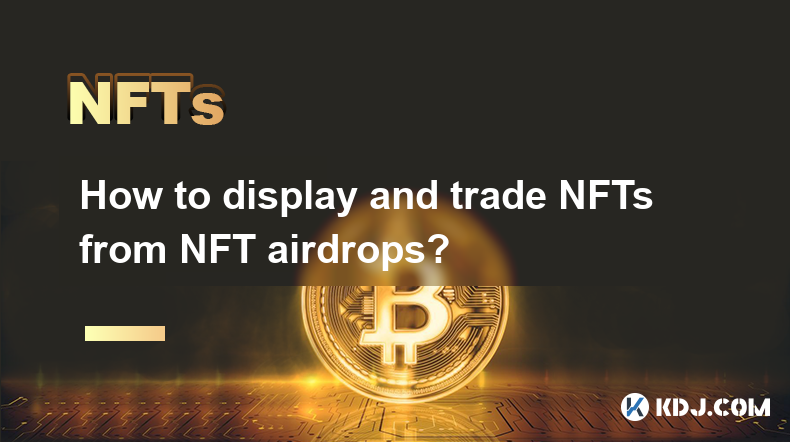
How to display and trade NFTs from NFT airdrops?
Apr 18,2025 at 04:42am
How to Display and Trade NFTs from NFT Airdrops? NFT airdrops have become a popular way for projects to distribute their tokens and engage with their community. If you've received NFTs through an airdrop, you might be wondering how to display and trade them. This article will guide you through the process step-by-step, ensuring you can showcase your NFT...
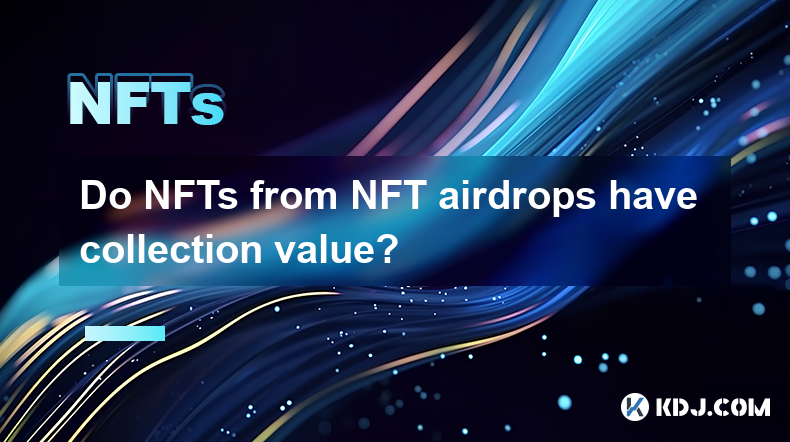
Do NFTs from NFT airdrops have collection value?
Apr 18,2025 at 11:49pm
NFTs, or non-fungible tokens, have become a significant part of the cryptocurrency ecosystem, and NFT airdrops are one way for projects to distribute these digital assets to their community. A common question that arises is whether NFTs received from airdrops have any collection value. To answer this question, we need to delve into various aspects of NF...

How is the smart contract for NFT airdrops designed?
Apr 18,2025 at 03:10am
The design of a smart contract for NFT airdrops is a complex process that requires careful consideration of various factors to ensure the airdrop is executed smoothly and securely. This article will delve into the intricacies of how such a smart contract is designed, focusing on key components, security measures, and the implementation process. Key Comp...
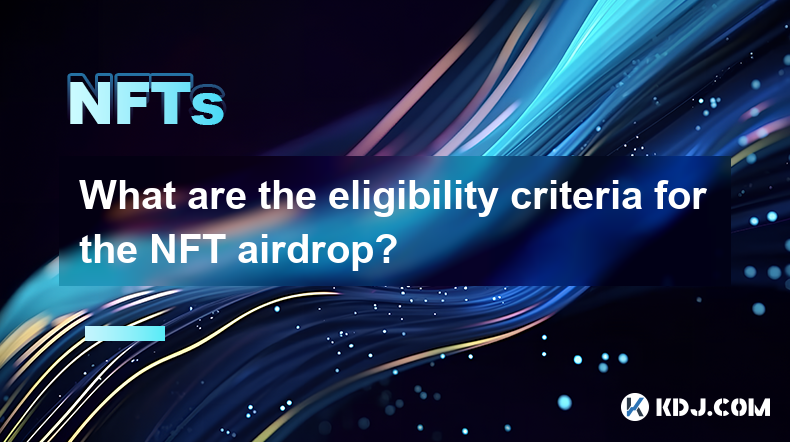
What are the eligibility criteria for the NFT airdrop?
Apr 17,2025 at 04:56pm
Understanding NFT AirdropsNFT airdrops are a popular method used by blockchain projects to distribute non-fungible tokens (NFTs) to their community members. These airdrops can serve various purposes, such as rewarding loyal users, promoting new projects, or increasing the visibility of existing ones. To participate in an NFT airdrop, individuals must me...

How to protect the copyright of artworks on NFT platforms?
Apr 19,2025 at 06:28am
The rise of Non-Fungible Tokens (NFTs) has revolutionized the way digital art is created, bought, and sold. As artists increasingly turn to NFT platforms to showcase and monetize their work, protecting the copyright of these artworks becomes a crucial concern. This article explores various strategies and tools that artists can use to safeguard their int...
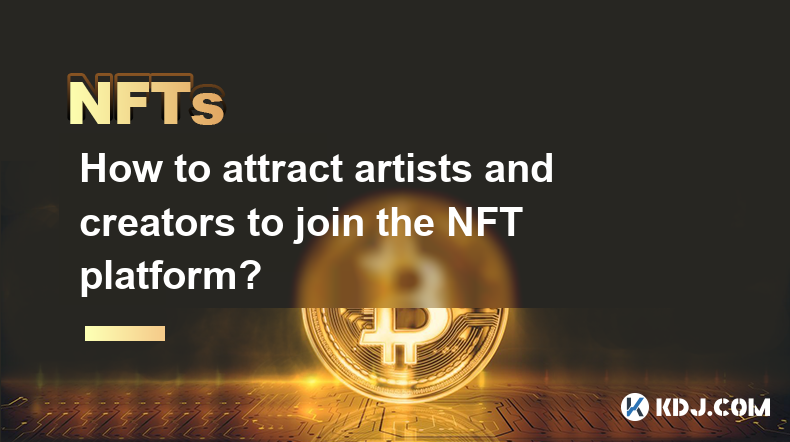
How to attract artists and creators to join the NFT platform?
Apr 18,2025 at 02:50pm
Attracting artists and creators to join an NFT platform is crucial for its success and growth. By understanding their needs and offering unique features, you can create a thriving community of digital artists and content creators. In this article, we will explore several strategies to entice artists and creators to join your NFT platform. Understanding ...

How to display and trade NFTs from NFT airdrops?
Apr 18,2025 at 04:42am
How to Display and Trade NFTs from NFT Airdrops? NFT airdrops have become a popular way for projects to distribute their tokens and engage with their community. If you've received NFTs through an airdrop, you might be wondering how to display and trade them. This article will guide you through the process step-by-step, ensuring you can showcase your NFT...

Do NFTs from NFT airdrops have collection value?
Apr 18,2025 at 11:49pm
NFTs, or non-fungible tokens, have become a significant part of the cryptocurrency ecosystem, and NFT airdrops are one way for projects to distribute these digital assets to their community. A common question that arises is whether NFTs received from airdrops have any collection value. To answer this question, we need to delve into various aspects of NF...

How is the smart contract for NFT airdrops designed?
Apr 18,2025 at 03:10am
The design of a smart contract for NFT airdrops is a complex process that requires careful consideration of various factors to ensure the airdrop is executed smoothly and securely. This article will delve into the intricacies of how such a smart contract is designed, focusing on key components, security measures, and the implementation process. Key Comp...

What are the eligibility criteria for the NFT airdrop?
Apr 17,2025 at 04:56pm
Understanding NFT AirdropsNFT airdrops are a popular method used by blockchain projects to distribute non-fungible tokens (NFTs) to their community members. These airdrops can serve various purposes, such as rewarding loyal users, promoting new projects, or increasing the visibility of existing ones. To participate in an NFT airdrop, individuals must me...

How to protect the copyright of artworks on NFT platforms?
Apr 19,2025 at 06:28am
The rise of Non-Fungible Tokens (NFTs) has revolutionized the way digital art is created, bought, and sold. As artists increasingly turn to NFT platforms to showcase and monetize their work, protecting the copyright of these artworks becomes a crucial concern. This article explores various strategies and tools that artists can use to safeguard their int...

How to attract artists and creators to join the NFT platform?
Apr 18,2025 at 02:50pm
Attracting artists and creators to join an NFT platform is crucial for its success and growth. By understanding their needs and offering unique features, you can create a thriving community of digital artists and content creators. In this article, we will explore several strategies to entice artists and creators to join your NFT platform. Understanding ...
See all articles
























































































